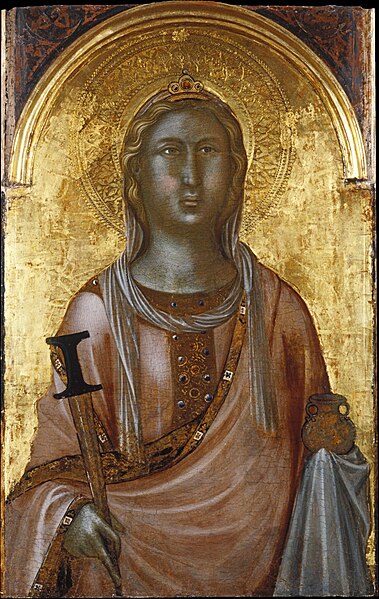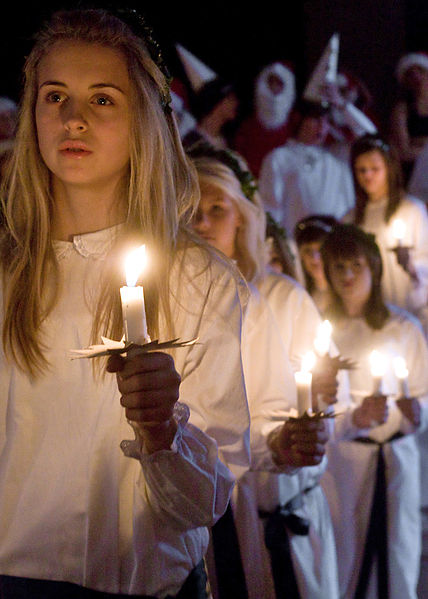Lucia of Syracuse (283–304), also called Saint Lucia was a Roman Christian martyr who died during the Diocletianic Persecution. She is venerated as a saint in Catholic, Anglican, Lutheran, and Eastern Orthodox Christianity. She is one of eight women explicitly commemorated by Catholics in the Canon of the Mass. Her traditional feast day, known in Europe as Saint Lucy's Day, is observed by Western Christians on 13 December. Lucia of Syracuse was honored in the Middle Ages and remained a well-known saint in early modern England. She is one of the best known virgin martyrs, along with Agatha of Sicily, Agnes of Rome, Cecilia of Rome, and Catherine of Alexandria.
Saint Lucy, by Niccolò di Segna mid 14th-century Sienese painting, c. 1340. The saint holds the dagger or sword with which she was ultimately executed and the lamp, her attribute.
Eutychia and Lucy at the Tomb of Saint Agatha, by Jacobello del Fiore
Lucy Before the Judge, by Lorenzo Lotto, 1523–1532
Saint Lucy by Domenico Beccafumi, 1521, a Renaissance recasting of a Gothic iconic image (Pinacoteca Nazionale, Siena)
Saint Lucy's Day, also called the Feast of Saint Lucy, is a Christian feast day observed on 13 December. The observance commemorates Lucia of Syracuse, an early-fourth-century virgin martyr under the Diocletianic Persecution. According to legend, she brought food and aid to Christians hiding in the Roman catacombs, wearing a candle-lit wreath on her head to light her way, leaving both hands free to carry as much food as possible. Because her name means "light" and her feast day had at one time coincided with the shortest day of the year prior to calendar reforms, it is now widely celebrated as a festival of light. Falling within the Advent season, Saint Lucy's Day is viewed as a precursor of Christmastide, pointing to the arrival of the Light of Christ in the calendar on 25 December, Christmas Day.
Celebration of Saint Lucy's Day in a Church of Sweden congregation in December 2006
A Saint Lucy procession in Sweden, 2007
Lucy by Cosimo Rosselli, Florence, c. 1470, tempera on panel
Albert Szent-Györgyi, who won the Nobel Prize in Physiology or Medicine in 1937, here at that year's Saint Lucy celebration in Stockholm








